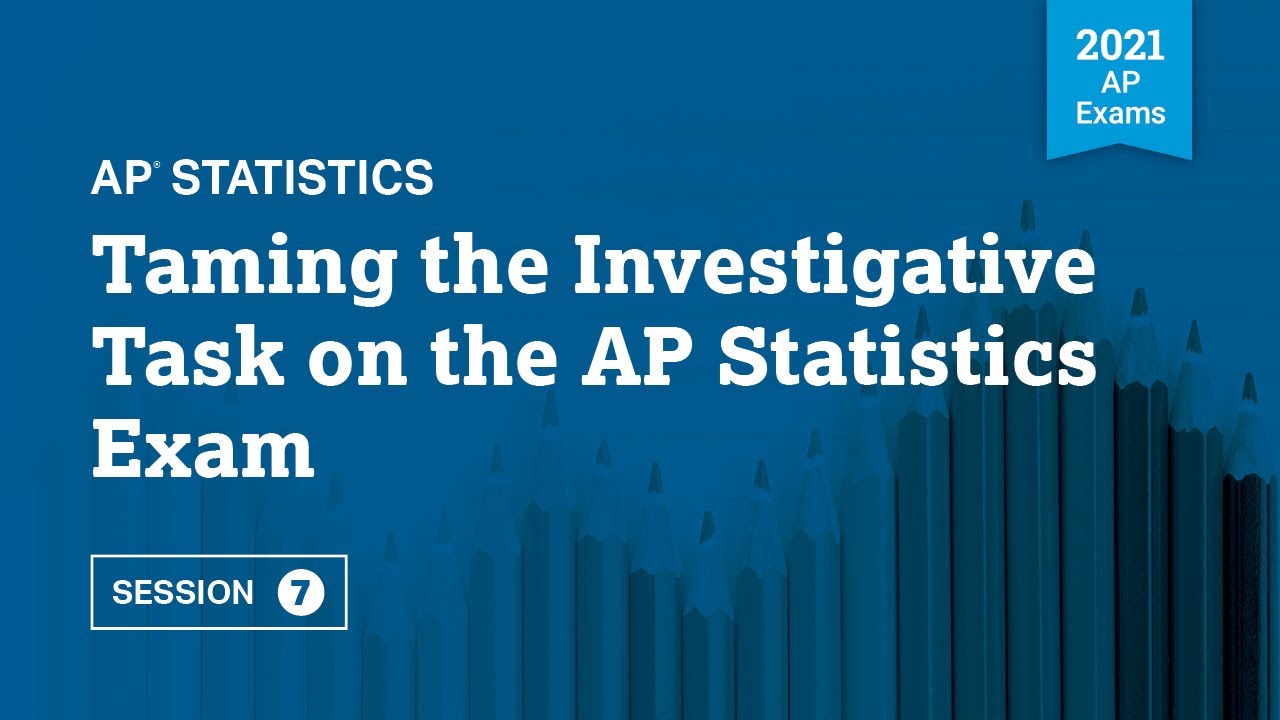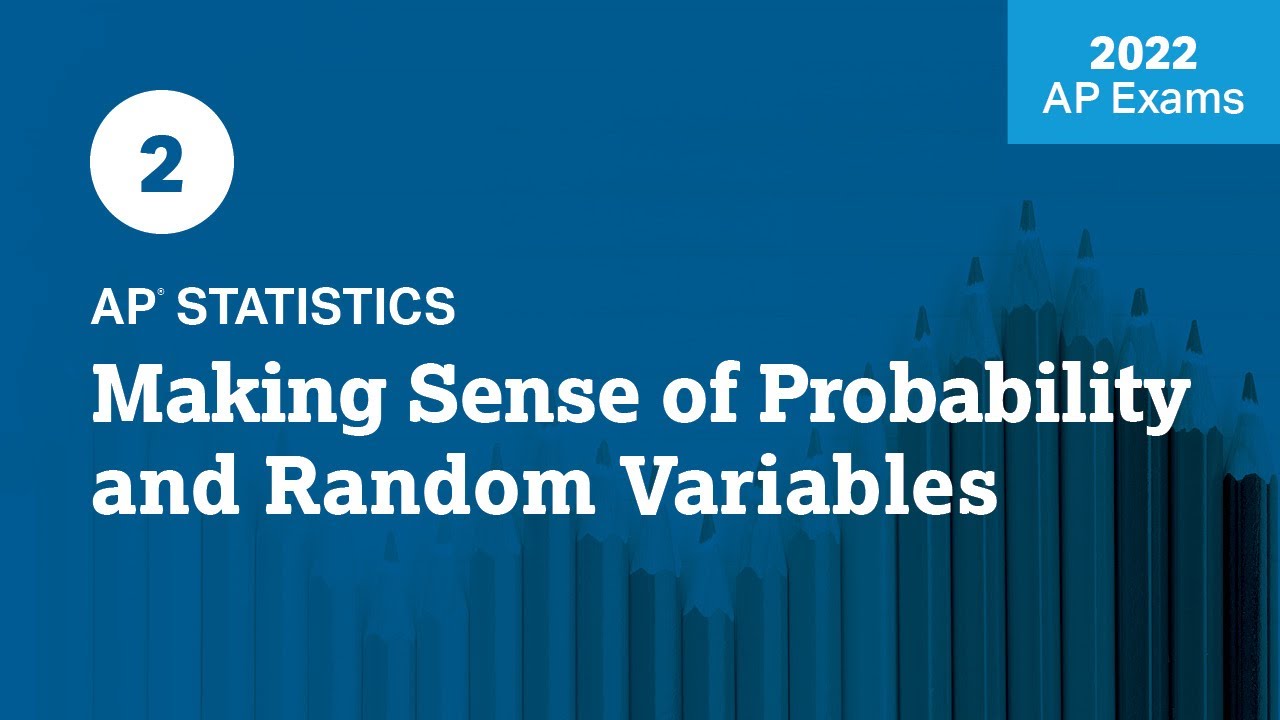3 | FRQ (Part A: Sampling) | Practice Sessions | AP Statistics
TLDRIn this AP Statistics practice session, Luke Wilcox explores two free response questions on data collection. The first question examines a dermatologist's experiment using 36 pairs of identical twins to test a new acne drug, identifying treatments, experimental units, and response variables. The second question discusses a study linking smoking to Alzheimer's, identifying explanatory and response variables, and explaining the observational nature of the study. Wilcox also covers the concept of confounding variables, using exercise status as an example.
Takeaways
- 😀 The session focuses on two free response questions related to collecting data in AP Statistics.
- 📥 Students are encouraged to download and attempt the questions before watching the video.
- 💊 The first question involves an experiment by a dermatologist on the effectiveness of a new acne drug using 36 pairs of identical twins.
- 📊 Treatments in the experiment are the new drug and a placebo, with experimental units being the 72 individual subjects.
- 📏 The response variable measured is the improvement in acne severity.
- 👥 Using a matched pairs design, where twins are paired, has statistical advantages over a completely randomized design.
- 🎲 Random assignment in the matched pairs design can be done using coin tosses, random number generators, or notecards.
- 📰 The second question involves an observational study on the association between smoking and Alzheimer's disease.
- 🚬 The explanatory variable in the study is the degree of cigarette smoking, while the response variable is Alzheimer's status.
- 🏃♂️ Exercise status is mentioned as a possible confounding variable in the study, influencing both smoking habits and Alzheimer's risk.
Q & A
What is the main purpose of the AP Daily Practice Sessions video?
-The main purpose of the video is to guide AP Statistics students through two free response questions related to collecting data, providing explanations and insights into the concepts of treatments, experimental units, response variables, and statistical advantages of certain study designs.
Who is Luke Wilcox and what is his role in the video?
-Luke Wilcox is an AP Statistics teacher at East Kentwood High School in Kentwood, Michigan. In the video, he is the instructor who explains the concepts and guides the students through the practice questions.
What is the first free response question about in the video?
-The first free response question is about a dermatologist's experiment to investigate the effectiveness of a new drug to treat acne using 36 pairs of identical twins, where each person receives either the new drug or a placebo.
What are the treatments in the dermatologist's experiment described in the video?
-The treatments in the experiment are the new drug and a placebo, which are given to the participants to evaluate the improvement in acne severity.
What are the experimental units in the dermatologist's experiment?
-The experimental units are the individual subjects, with a total of 72 people (36 pairs of identical twins), who are randomly assigned to receive either the new drug or the placebo.
What is the response variable in the dermatologist's experiment?
-The response variable is the improvement in acne severity, which is measured on a scale from 0 (no improvement) to 100 (complete cure) after two weeks of treatment.
What is the statistical advantage of using a matched pairs design in the dermatologist's experiment?
-The statistical advantage of using a matched pairs design is that it allows for the variation in improvement scores due to the treatment received to be distinguished from the variation due to initial acne severity, making it easier to find convincing evidence of the new drug's effectiveness.
How can treatments be randomly assigned in a matched pairs design as described in the video?
-Treatments can be randomly assigned using methods like coin tosses, random number generators, or notecards labeled with 'new drug' and 'placebo'. The same process is repeated for all 36 pairs of twins to ensure random assignment.
What is the second free response question about in the video?
-The second free response question discusses a study reported in a local newspaper that found a strong association between smoking and Alzheimer's disease, and it involves identifying explanatory and response variables and understanding study types and confounding variables.
What are the explanatory and response variables in the Alzheimer's disease study mentioned in the video?
-The explanatory variable is the degree of cigarette smoking, measured by the number of packs smoked per day. The response variable is Alzheimer's status, which is a categorical variable with values of 'yes' or 'no'.
Is the study described in the article an observational study or an experiment? Why?
-The study is an observational study because the researchers passively observed and recorded the degree of cigarette smoking without imposing any treatment on the subjects, unlike in an experiment where treatments are assigned.
How could exercise status be a confounding variable in the Alzheimer's disease study?
-Exercise status could be a confounding variable because it may be related to both the degree of smoking (as healthier individuals might smoke less) and the risk of developing Alzheimer's (as regular exercise might reduce this risk), thus influencing the observed association between smoking and Alzheimer's.
Outlines
📚 Introduction to AP Statistics Practice Session
Luke Wilcox, an AP Statistics teacher at East Kentwood High School, introduces an AP Daily Practice Session focused on data collection. He encourages students to download and attempt two free response questions before watching the video to check their work. The session will cover the identification of treatments, experimental units, and response variables in an experiment involving a dermatologist's study on acne treatment with identical twins.
🧪 Understanding the Design of a Dermatologist's Acne Study
The video script explains the design of an experiment where a dermatologist investigates a new acne treatment using 36 pairs of identical twins. Each subject receives either a new drug or a placebo, and their acne improvement is measured on a scale. The script clarifies the treatments, experimental units, and response variable. It emphasizes the importance of identifying individual subjects as experimental units rather than pairs and discusses the statistical advantage of using a matched pairs design over a completely randomized design to control for initial acne severity variance.
🔄 Random Assignment Process in Matched Pairs Design
The script describes how to randomly assign treatments to subjects in a matched pairs design using the example of a dermatologist's experiment. It suggests using a coin toss to determine which twin receives the new drug or placebo, and emphasizes the need to repeat this process for all pairs. Alternative methods like random number generators or notecards are also mentioned. The explanation ensures that the random assignment process is clear and consistent across all pairs of twins.
🧠 Alzheimer's Study: Exploring Smoking and Cognitive Decline
The script discusses a study reported in a local newspaper that found a strong association between smoking and Alzheimer's disease. It identifies the explanatory variable as the degree of cigarette smoking and the response variable as Alzheimer's status. The study is confirmed as observational, not experimental, since the researchers did not impose smoking levels on subjects. The script also introduces the concept of confounding variables, specifically exercise status, which could influence both smoking behavior and Alzheimer's risk, thus potentially affecting the study's conclusions.
🏋️♂️ Exercise as a Potential Confounding Variable in Alzheimer's Research
The script delves into the role of exercise status as a possible confounding variable in the study linking smoking to Alzheimer's disease. It explains that exercisers might be more health-conscious and less likely to smoke, thus connecting exercise status to the explanatory variable of smoking. It also suggests that regular exercise could independently reduce Alzheimer's risk, affecting the response variable. The script concludes by highlighting how the association between smoking and Alzheimer's could be influenced by the confounding effect of exercise, complicating the interpretation of the study's findings.
Mindmap
Keywords
💡AP Statistics
💡Free Response Questions
💡Dermatologist
💡Identical Twins
💡Placebo
💡Acne Severity
💡Matched Pairs Design
💡Random Assignment
💡Alzheimer's Disease
💡Confounding Variable
💡Observational Study
Highlights
Introduction to AP Daily Practice Sessions by Luke Wilcox, an AP Statistics teacher.
Recommendation to try free response questions before watching the video for practice.
First free response question involves a dermatologist's experiment on a new acne treatment.
Experiment uses 36 pairs of identical twins, each receiving new drug or placebo.
Identification of treatments, experimental units, and response variable in the experiment.
Clarification that 72 individual subjects are randomly assigned treatments, not pairs of twins.
Acne severity improvement measured on a scale from 0 to 100 as the response variable.
Statistical advantage of using matched pairs design over completely randomized design.
Matched pairs design controls for initial acne severity variation between subjects.
Random assignment process for matched pairs design using coin toss, random numbers, or notecards.
Second free response question examines a study on smoking and Alzheimer's disease.
Study tracked 21,123 men and women for 23 years, finding strong association between smoking and Alzheimer's.
Identification of explanatory (degree of smoking) and response (Alzheimer's status) variables.
Determination that the study is observational, not experimental, as researchers did not assign smoking levels.
Exercise status as a possible confounding variable in the study.
Confounding variable definition and its connection to both explanatory and response variables.
Explanation of how exercise status could influence both smoking habits and Alzheimer's risk.
Upcoming session four announcement covering two multi-focus free response questions.
Transcripts
Browse More Related Video

2021 Live Review 7 | AP Statistics | Taming the Investigative Task on the AP Statistics Exam

2022 Live Review 2 | AP Statistics | Making Sense of Probability & Random Variables

4 | FRQ (Part A: Multi-Focus) | Practice Sessions | AP Statistics

2 | FRQ (Part A: Probability) | Practice Sessions | AP Statistics

1 | MCQ | Practice Sessions | AP Statistics

Study Designs (Cross-sectional, Case-control, Cohort) | Statistics Tutorial | MarinStatsLectures
5.0 / 5 (0 votes)
Thanks for rating: